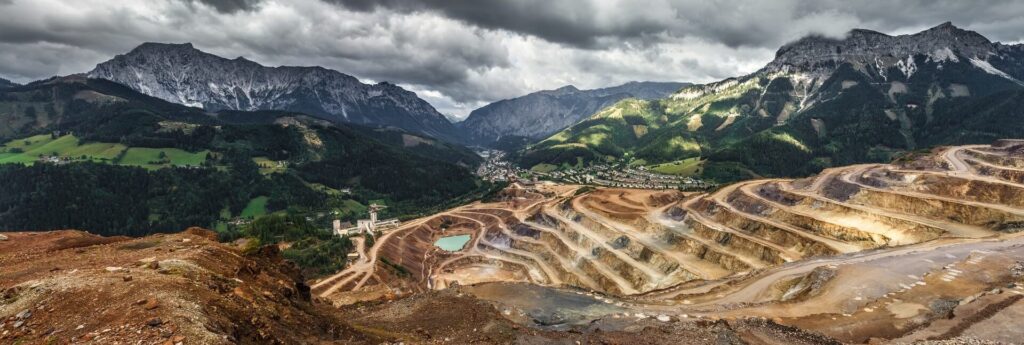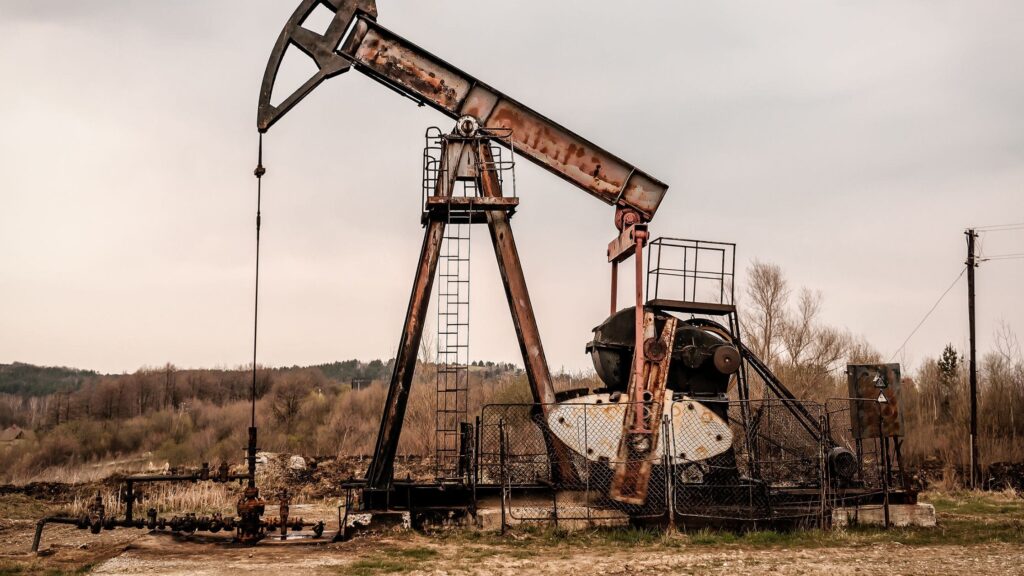It must be stressed that there are various kinds of land rights in the United States. In this guide, we will provide an overview of the two primary rights: mineral rights and surface rights, and what you need to know if you want to buy land without mineral rights. Let’s dive in!
Overview of mineral and surface rights
Your ownership of the surface rights to a property does not necessarily imply that you own the mineral rights. In the United States, the split estates ensure that surface rights and mineral rights are two distinct entities. For this reason, it is possible for people to own one – or both – of these rights. What exactly is mineral rights, by definition?
What are mineral rights?
Mineral rights represent the ownership right to any underground resources – including metals and ores, fossil fuels, and other mineable rocks that are present on a property. Having this right makes it possible for an owner to win and exploit all natural resources that are present beneath the land.
The United States has made it possible for private individuals to buy land while possessing the ownership right to develop and exploit the land, including all natural resources that are present beneath the surface. Other locations across the globe provide less freedom.
Several countries permit private individuals to buy land. However, this ownership right does not extend beyond the land surface. In this case, all resources present beneath the surface are owned and controlled by the country’s government.
If you own the mineral rights to your land, you can either sell them or lease them to an interested party. Both options have their pros and cons, and you can make money by either collecting royalty interest or working interest. It will be up to you to decide which one you prefer.
Since these minerals in the United States can be privately owned, this makes it possible for landowners – with rights to minerals on their resources – to sell these mineral rights to corporations. As mentioned earlier, mineral rights and surface rights are different.
What are surface rights?
Surface rights are ownership that includes the most visible aspects of a property, such as trees, structures, water, and plants. Surface rights can include ownership to a specific depth of soil in some states.
A landowner might have sufficient soil ownership that can plan trees, but not enough to drill oil or gas. There are certain states in the US, including Louisiana, Texas, Pennsylvania, Colorado, and New Mexico, where rights are split between mineral and surface rights.
When law permits split ownership, it is possible to sell land to include surface rights alone. This implies that even though there is the presence of oil or gas beneath the soil, the owner will have no legal right to tamper with them.
Indeed, the landowner has no right over the resources beneath the ground even if they are approached by any company for extraction. To own the resources underground and to be able to manage them, a landowner must have mineral rights.
Furthermore, it is worth pointing out that in states where split land ownership rights are embraced, surface rights depend on mineral rights. This implies that if an owner holds a mineral right and they want to excavate a property, there is no need to receive any permission from owners of surface rights before they can do so. For surface right owners, this can be frustrating and disruptive.
Things to remember when buying land without mineral rights
It is important to note that once mineral rights have been detached from surface rights, nothing changes. To purchase land, it is imperative to make diligent research, including rights before arriving at any consequential decisions. This will prevent any form of unsavory surprises. There are instances when individuals, seeking to buy both mineral and surface rights, eventually discover that the mineral rights have been sold to a third party. You can check mortgage paperwork to figure out the kind of rights you hold. Things to put into consideration when purchasing a piece of land without mineral rights are introduced as follows:
1. Remember that mineral rights can also be bought, leased, or sold
This is an important consideration that must not be ignored before purchasing a piece of land. It should be noted that you can either lease or sell the mineral rights you own to your land to any interested party. These options have their upsides and drawbacks and enough money can be made by either receiving working interest or royalty interest. The one you prefer will be up to you to decide.
Either way, you must understand that there is a great need to get your mineral rights in front of many potential buyers if you wish to maximize your mineral rights. By doing this, you are getting the best deal. You should also get professional assistance and appropriate advice all through the process.
2. Even without mineral rights your land still has value
Mineral rights only grant ownership to the resources beneath a property. However, not having mineral rights does not imply that the land has no value. In fact, as already mentioned earlier, your surface right grants you ownership over the plants, trees, and water on your property.
Depending on the mineral and technology adopted, the depth of a mineral right varies. For open-pit mining, the average depth is between 100 to 500 meters. However, for deep mining, this could go down as far as 2.8 to 3.4 kilometers. Simply put, everything that lies on the surface belongs to the individual with the surface rights.
3. Research the included rights thoroughly before making any buying decisions
To prevent unpleasant surprises, there is a great need to make appropriate findings of all included rights before you make any buying decisions. This helps you understand everything you must know to guide your decisions. As discussed earlier, having surface rights grant you ownership to all visible resources at the surface of a piece of land.
On the other hand, mineral rights grant ownership of all resources beneath the land. Once you understand all the included rights, you can acquaint yourself with the potential upsides of purchasing the land.
4. Both mineral and surface rights can have several owners (split estates)
It has already been established that the split estates ensure that surface and mineral rights remain distinct entities. For this reason, both rights can be owned by different owners. It is worth noting that the holders of mineral rights have always been the dominant party in terms of accessing resources below the surface. Yet, it is also possible for a single individual or organization to possess both mineral and surface rights to a piece of land.
Oftentimes, mining companies can attempt to work out plans to reduce disruption, but you can retain absolute control over land by purchasing both mineral and surface rights. However, if the land you wish to possess has no mineral rights, then you should be informed of whoever holds the mineral rights and the effect of this on the use of your property.
5. Surface rights and mineral rights can be severed at some point in the future
At any point, surface and mineral rights can be severed at any point. Simply put, a legal severance happens anytime the owner of the mineral under a piece of land and the land itself convey any of these interests without the other to another entity.
For instance, in Texas, a ranch owner might decide to only sell the right to make use of the surface portion to another person who intends to use it for other purposes, including hunting and ranching. This kind of transaction involves the conveyance of surface rights. However, the mineral rights are retained.
6. Due diligence is a must when purchasing property without mineral rights
It is important to make thorough research when you wish to buy a property without mineral rights. Purchasing a piece of land as an investment requires due diligence. There is a need for a local attorney with experience of that area regardless of whether you are buying a piece of land with or without mineral rights.
The presence of an attorney ensures that you have someone that must have handled situations concerning mineral rights and for this reason, should be able to know much about the drilling and mining activities in that area. To figure out if the property is worth it or not, it is important to weigh the upsides and drawbacks.
As explained earlier, you might only desire to use your land to grow crops or raise livestock. Yet, when someone else owns mineral rights over that land, they have access to it anytime, and in the process, might interfere with whatever you want to use your land for the way you would wish to.
7. Owning the mineral rights on your land can be profitable
There are several benefits that come with owning the mineral rights on your land. It is possible to sell your mineral rights or simply lease them to another entity. Besides, it is also possible to sell the rights to royalties differently from the mineral rights.
When it comes to planning your estates, mineral rights can also provide an extra option. A royalty owner can always pass down these rights onto their heirs. This ensures that a source of valuable income can be owned while having an asset to bequeath to your family. In addition, before you set up any royalty agreement, it is essential that you consult a tax accountant.
You can also focus your mineral rights contact to meet your specific demands. Government agencies can acquire rights from landowners to provide appropriate resources to the local community. You can designate the types of minerals that should be mined when designing the contract and certain areas of your property can be left untouched for your future use.
8. Mineral rights owners have the right to install excavating and drilling equipment on your property
You might purchase a piece of land for different purposes, including farming and hunting. Yet, you must not be ignorant of the mineral rights ownership, which makes it possible for the owner of these rights to install excavating and drilling equipment on your property. After all, they have the rights to the resources beneath the ground. So, the acquisition of mineral rights makes it possible for owners of the rights to make use of your land without the need for your permission, as long as their drilling equipment is strictly meant for the resources beneath the land surface.
9. You can do a mineral rights title search and check the owner
While doing your research, a specific mineral rights search can be important. There are several ways to achieve this. You can review county records and tax assessor’s documents. Performing a deed search at the county records office can get you acquainted with the ownership history of any property over a specific period.
Besides, do not forget about royalty deeds. Specific properties can allow an owner to issue a royalty deed. This implies that the owner can obtain a royalty on any mineral that is obtained from their land. Royalty deeds can also lead you to the holder of the mineral rights.
Furthermore, you can also use a title company. Even though you will be charged a certain amount of fee, a title company can help you carry out your search effortlessly.
10. The value of mineral rights is volatile
Before purchasing a property, you should also note that the value of mineral rights is tied to the amount that a buyer is willing to pay. You might be eager to discover what the exact value of having mineral rights is. Also, you might wonder if buying a property without mineral rights can drastically affect your investment or how the number might add up.
The volatility of the value of mineral rights ensures that the prices vary rapidly. For this reason, it is safe to affirm that the worth of your mineral rights is based on whatever anyone is willing to pay for them at that instance. To get an insight into the worth of mineral rights in your location, you can reach out to a local lawyer. This might give you an estimate of the value of your property.
11. Mineral and royalty rights come with tax liabilities
Oil and gas royalty taxes vary in size and type. State royalty taxes, county royalty taxes, and federal royalty taxes are examples of royalty taxes you might come across. All of these might add up to considerable tax bills for mineral owners. You must understand these royalty taxes and this can make it possible to help you save more money.
So should you buy land without mineral rights?
Purchasing land without mineral rights comes with several downsides. A mineral rights owner does not need the permission of a surface rights owner to exploit the resources that are beneath the surface of land. However, the latter must seek the consent of the former to exploit the minerals under the ground. For this reason, it is better to own mineral rights than surface rights.
Conclusion
Before you purchase a piece of land, you must acquaint yourself with the two basic rights: surface and mineral rights.
A unified estate is when a landowner owns both mineral and surface rights. On the other hand, when mineral and surface rights are severed from each other, this ownership is regarded as a split estate. Another option is when mineral rights are divided between many owners. This is known as a fractional estate.
A landowner may decide to sell or lease mineral rights to multiple buyers, who then hold the rights to the resources on the piece of land. Understanding how these two rights work will ensure that you make an informed choice and you can enjoy the benefits that come with the resources that are present in the land while avoiding any issues that might catch you by surprise.









